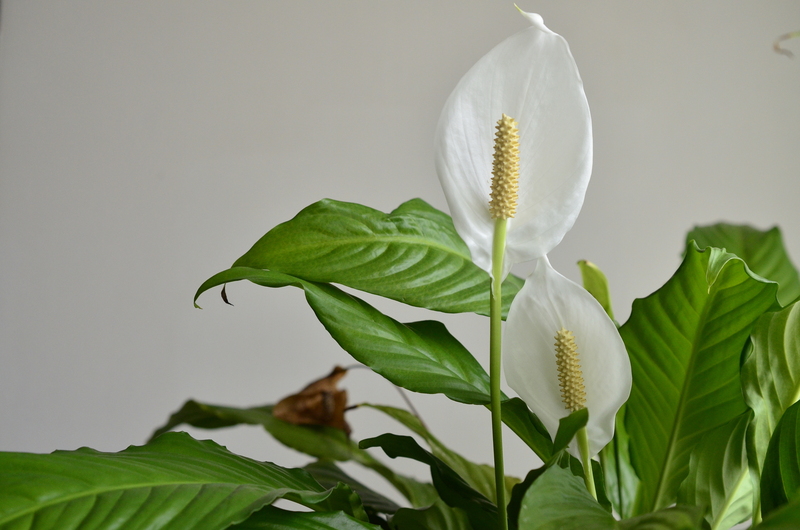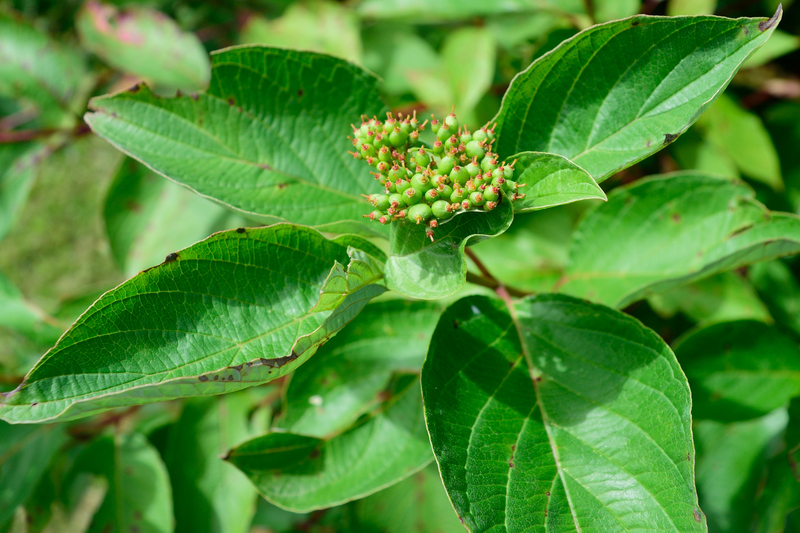Ensure Your Garden's Survival: Winter Plant Safekeeping Tips
Posted on 17/08/2025
Ensure Your Garden's Survival: Winter Plant Safekeeping Tips
As the vibrant blooms of summer fade and cooler days set in, every gardener faces a critical question: How can you keep your beloved plants alive and healthy throughout the harsh winter months? Winter can be a challenging season for gardens, with freezing temperatures, snow, wind, and fluctuating moisture levels threatening to damage or even kill your prized plants. But with careful preparation and winter plant protection strategies, your garden can not only survive but thrive when spring returns.

Understanding Winter's Threats to Gardens
Before implementing winter plant safekeeping tips, it's essential to understand the main threats the colder months pose to your green space. These include:
- Cold Damage: Sharp drops in temperature can cause cell damage, particularly in tender or young plants.
- Desiccation: Winter winds and sun can dry out plant tissues, especially evergreens.
- Root Injury: Freezing soil can harm roots, making it hard for plants to absorb water.
- Frost Heave: The freezing and thawing cycle causes soil to expand and contract, which can push plants out of the ground and expose roots.
- Pest Problems: Rodents and other critters may chew on bark and roots for food in winter.
Choosing the Right Plants: The First Step in Successful Winter Gardening
The key to winterproofing any garden is to start with the right plant selection. Native species and those labeled as hardy for your USDA plant hardiness zone will naturally cope with your local winter conditions. When planning a new garden--or expanding an existing one--consider the following:
- Research Hardiness: Check the hardiness zone on plant labels or consult reliable gardening resources.
- Consider Microclimates: Warm spots near walls or sunny corners can support less hardy species.
- Diversity is Key: Plant a mix of species to minimize total loss if one type struggles in winter.
Pro Tip: Potted plants are generally more vulnerable, as cold penetrates containers more easily than garden beds. Consider overwintering containers indoors, in greenhouses, or clustered together in protected locations.
Winterizing the Garden: Step-by-Step Guide
Now, let's dive into a comprehensive, easy-to-follow plan to guarantee your winter plant care success. Follow these key steps to safeguard your garden:
1. Clean Up and Remove Debris
- Clear leaves and plant debris to prevent fungal diseases and pests from overwintering.
- Compost healthy plant material, but dispose of any diseased foliage away from your garden.
2. Protect Your Soil With Mulch
Mulching is a vital part of winter plant protection tips. Mulch insulates roots, prevents soil erosion, and reduces water loss.
- Apply a 2-4 inch layer of straw, shredded leaves, pine needles, bark mulch, or wood chips.
- Keep mulch away from direct contact with tree trunks and plant stems to avoid rot.
- If snow is likely, let the first few frosts harden the ground before mulching to discourage rodents from nesting.
3. Water Well Before Ground Freezes
Plants need moisture even in winter. Dry soil can actually freeze more rapidly and deeply than moist soil.
- Deeply water garden beds and perennials during the last warm days of fall.
- Be sure newly planted trees and shrubs are well hydrated before winter arrives.
- After ground freezes, avoid watering to prevent ice-related root damage.
4. Shield Tender & Young Plants
If you're concerned about specific plants, such as new perennials, roses, or evergreens, extra winter plant safeguarding is warranted:
- Surround vulnerable shrubs with burlap screens, secured to stakes, to break harsh winds and block winter sun.
- Mound soil or mulch around bases of roses and young trees.
- Build simple frames of chicken wire covered with straw, leaf litter, or frost cloths for precious perennials.
For added flexibility, commercial frost blankets or row covers can be draped over susceptible annuals or vegetables still producing late in the year.
5. Prune at the Right Time
Proper pruning helps reduce disease and shape plants for winter resilience, but timing is crucial:
- Prune dead or diseased branches in late fall or early winter to prevent breakage under snow load.
- Avoid heavy pruning of spring-flowering shrubs until after they bloom next season, as you may remove potential buds.
- Refrain from stimulating new growth close to the winter freeze; this new tissue is most vulnerable to cold injury.
Protecting Delicate and Exotic Plants
Some garden favorites, such as fuchsias, dahlias, citrus, or figs, need extra care. Use these winter garden protection strategies:
- Dig and Store: Tubers or bulbs (like dahlias, cannas, gladiolus) should be dug up post-frost, dried, and stored in cool, dark, frost-free places.
- Container Gardening: Bring potted tropicals or tender perennials indoors to a sunny window or heated greenhouse.
- Cloche & Cold Frames: Protect individual plants or small plots with glass or plastic covers to trap heat and block wind.
Remember to gradually reintroduce these plants to outdoor conditions in spring to avoid shock.
Evergreens: Special Considerations for Year-Round Color
Evergreens bring life to your garden through winter but can suffer from sunscald, windburn, and dehydration.
- Anti-desiccant Sprays: Apply products designed to reduce moisture loss from leaves or needles.
- Temporary Shade: Erect burlap screens or shade cloths on south and southwest exposures to prevent sunscald.
- Mulch Generously: Protect shallow roots with a deep organic mulch layer.
Defending Against Winter Pests and Wildlife
As food becomes scarce, deer, rabbits, mice, and voles may turn to your garden for sustenance. Employ these winter garden safeguarding techniques:
- Wrap trunks of young trees with wire mesh or tree guards to deter gnawing animals.
- Clean up fruit and vegetable residues that could attract rodents or wildlife.
- Consider physical barriers, repellents, or even companion planting with deer-resistant species in problem areas.
Maintaining Your Lawn and Hardscape Through Winter
Lawn and non-plant elements of your garden also benefit from seasonal care:
- Last Mow: Cut grass slightly shorter for the final mow, but don't scalp.
- Leave the Leaves: Shred and mulch leaves onto garden beds to insulate soil and suppress spring weeds.
- Protect Hardscape: Avoid rock salt on walkways near plantings, and repair paths to prevent ice hazards.
Invest in Useful Winterizing Tools & Materials
Every gardener can ease winter plant safekeeping with a few essential supplies:
- High-quality mulch (bark, straw, wood chips)
- Burlap, frost cloths or horticultural fleece
- Tree wraps or trunk guards
- Stakes, twine, or wire caging materials
- Pruners, gloves, and garden shears
- Organic anti-desiccant spray (for evergreens and broadleaf shrubs)
- Cold frames, cloches, or mini-greenhouses for delicate plants
Inside Plant Care: Helping Houseplants and Tender Potted Plants Survive Winter
Not all your garden is outside! For those with houseplants or containers moved indoors, keep these winter indoor plant survival tips in mind:
- Light: Place near windows for maximum sun; consider LED grow lights if daylight is scarce.
- Watering: Plants need less water in winter--overwatering is a common killer.
- Humidity: Heated homes are dry; mist your plants or use a humidifier to prevent leaf browning.
- Temperature: Avoid placing plants near radiators or cold drafts.
- Check for Pests: Indoor air can promote spider mites or aphids--inspect regularly.
Common Winter Plant Survival Mistakes to Avoid
Even experienced gardeners can make mistakes that hinder winter garden plant safety. Stay vigilant to avoid these pitfalls:
- Applying Mulch Too Early: Wait until after the first frost to avoid providing a cozy home for pests.
- Ignoring Container Plants: Pots freeze faster; move them to shelter or wrap them for insulation.
- Using Cheap or Non-Breathable Covers: Plastic can trap moisture and promote rot; opt for breathable materials.
- Forgetting to Check on Plants: Inspect regularly, especially after storms or thaws, and adjust covers as needed.
- Not Adjusting for Weather Fluctuations: Rapid thaws and freezes can be tough on plants--monitor closely and adjust as required.

Spring's Arrival: Uncovering and Recovering Your Garden
As the snow melts and temperatures climb, it's time to help your plants transition out of winter dormancy:
- Remove Protective Covers Gradually: Don't rush to remove mulch, screens, or wraps; sudden exposure can shock sensitive plants.
- Check for Frost Damage and Disease: Prune away damaged branches once new growth appears.
- Resume Watering and Feeding: Start a regular watering and fertilizing routine as growth resumes.
- Inspect for Pests: Early detection allows for prompt treatment and keeps your garden healthy.
Conclusion: Master the Art of Winter Gardening
Ensuring your garden's survival during winter requires planning, preparation, and ongoing care. From selecting hardy plants and applying protective mulch to taking extra precautions with delicate or unexpected species, every action matters. With these comprehensive winter plant safekeeping tips, you can look forward to a healthy, vibrant landscape when the world thaws once more.
Take the time now to prepare your garden for winter's challenges and watch as your plants reward you with vigorous growth and dazzling blooms in the spring. Embrace the season, and let your garden rest--knowing it's safe, secure, and ready for the next exciting cycle of growth!
```


